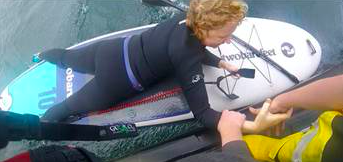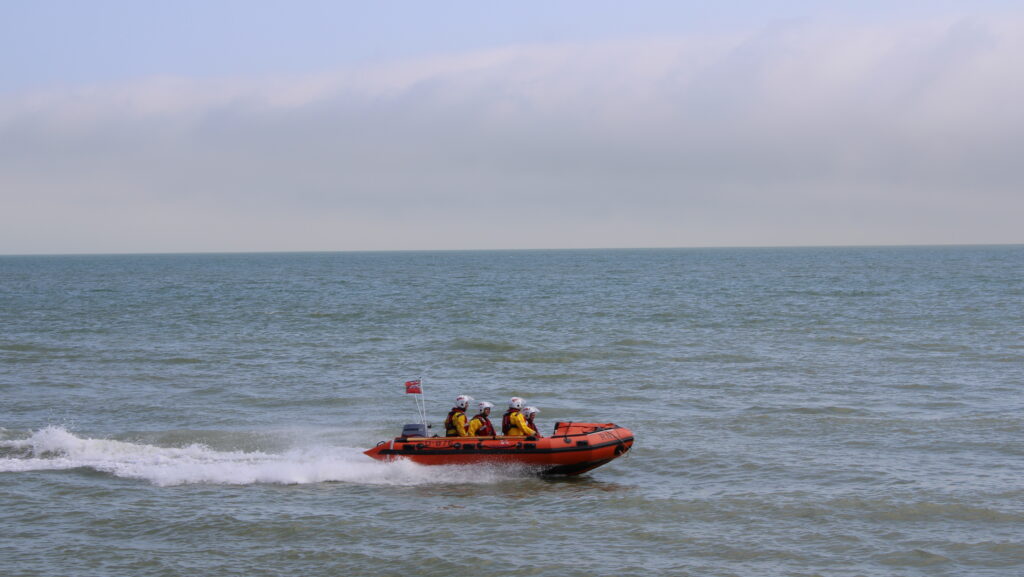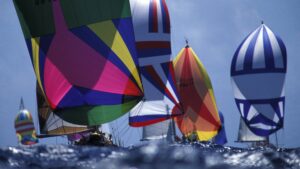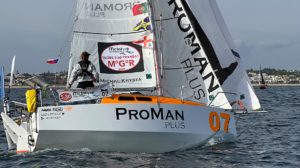UK safety warning issued after triple increase in paddleboard rescues
 The number of paddleboarders whose lives were saved has increased sixfold over five years.
The number of paddleboarders whose lives were saved has increased sixfold over five years.
The Royal National Lifeboat Institution (RNLI), Paddle UK, and HM Coastguard are urging people who use paddleboards, kayaks, or canoes on the water to stay safe amid a startling rise in rescues involving paddlesports.
In 2023, lifeboat crews launched to paddleboarders 155 times in UK waters, compared to just 52 launches in 2019. In 2022, RNLI lifeguards and lifeboat crews responded to 1,465 incidents in total, more than double compared to 2021.
The number of paddleboarders whose lives were saved has increased sixfold over five years. Volunteers saved three lives in 2019, rising to 22 last year.
One one single day in August 2023, coastguard rescue teams and RNLI lifeboats dealt with 30 incidents involving paddleboards and inflatables across northwest England and Wales.
Steve Close, 61, and his granddaughter Alyssa Close, 11, are joining the campaign after they were rescued by Eastbourne RNLI on 31 May 2024.
The pair had gone into the water in Pevensey Bay, Eastbourne, with Alyssa on a paddleboard and Steve in a kayak. As weather conditions worsened, they were pushed into deeper water.
“We were about two miles out, a small dot on the horizon,” says Close.
The pair, from Portsmouth, were eventually rescued by Eastbourne RNLI, and although cold, were unharmed.
They were 300 metres offshore when the weather conditions quickly started to worsen, the wind and waves strengthened and they were blown out into deeper water with low visibility. Alyssa lost her paddle and they knew they were in trouble.
Fortunately, they were well prepared, wearing wetsuits and buoyancy aids and carrying a mobile phone in a waterproof pouch.
Back at the beach, Close’s wife Sharon was watching them with growing concern when she got a call from her husband.

Close says: “I phoned Sharon to ask for help, and she called 999 for the coastguard. We kept drifting, so I got Alyssa into the kayak, and we lashed it together with the paddleboard.”
The pair were quickly drifting out of sight, but Eastbourne RNLI’s inshore lifeboat was soon on the scene and brought them both back to shore, where they were met by the Eastbourne Coastguard Rescue Team.
Close says: “We did the right thing. Everyone knew where we were, and someone was on the beach able to keep a lookout.
“I was used to the currents but the wind just overtook us. Once we were beyond the sandbar we were in deeper water and we dared not get out.”
Thankfully, they were both returned to shore, cold but unharmed and taken into the care of the Eastbourne CRT.

With 10 per cent of kayakers/canoeists and nine per cent of paddleboarders reporting that they make none of the recommended preparations before hitting the water, the RNLI and Paddle UK are urging people to make safety a priority, with the UK’s heatwave set to continue into late August.
RNLI national water safety partner, Sam Hughes, says: ‘We always want people to enjoy our coastline but we are urging everyone to think carefully before heading out.
“Our rescue data shows that almost half of lifeboat launches to paddleboarders were due to offshore winds and tides, something water users can check before hitting the water. If you are on a lifeguarded beach, keep an eye out for the orange windsock to see which way the wind is blowing.”
Richard Wasson, HM Coastguard community safety lead, adds: “Paddleboarding is hugely popular but unfortunately, we regularly see people taken by surprise by the conditions and carried away from the shore by wind and tide.
“To have fun and stay safe just needs a little preparation, such as checking the weather and tide, and having the right equipment. If it’s not the right conditions, there’s no harm in leaving your trip for another day – the sea will still be there.
“If you do get into difficulty, call 999 and ask for the coastguard.”











